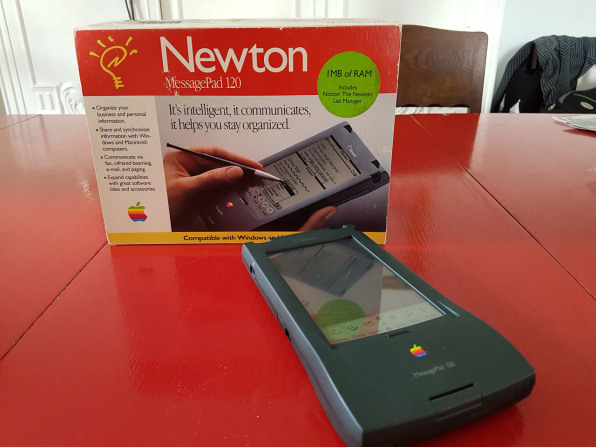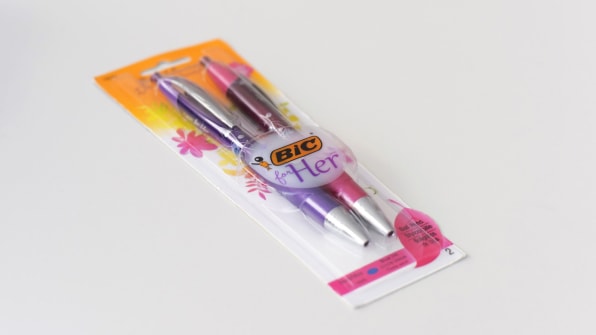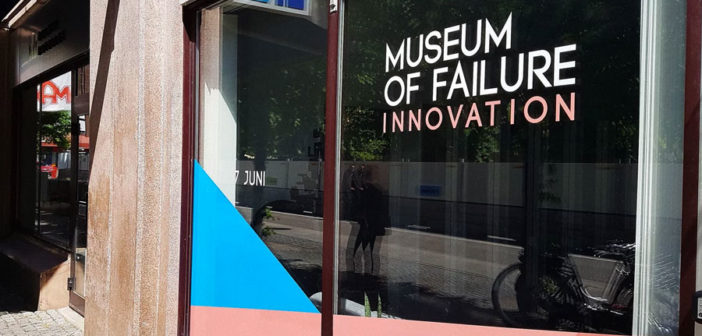“I just got sick and tired of all these success stories,” says the museum’s founder. “We glorify success so much, but at the expense of demonizing failure.”
Just a six-hour train ride south of Stockholm in the town of Helsingborg, Sweden, there’s a little gallery with an abnormal mission. Instead of putting successful works of art or design up for admiration, it showcases absolute disasters. It’s called the Museum of Failure.
There’s Google Glass, obviously, and Twitter Peek; there’s the Bic pen “for her,” Harley-Davidson perfume, and the Apple Newton, a handheld device from back in the day when Apple’s logo was rainbow-colored. But while all this failure might sound depressing, the museum is also a monument to innovation–and all the mistakes that go with it.

There’s a point to putting such failures up on a pedestal, according to the museum’s director Samuel West. A former clinical psychologist, he also has a doctorate in innovation from Sweden’s Lund University and believes that failure is a central component to coming up with new technology. But he’s sick of the lack of conversation about failure’s role in innovation. West says he’s been to too many conferences where success was the only topic of conversation–successful products, successful services, and the successful people who’d made them happen.“I just got sick and tired of all these success stories,” West says. “We glorify success so much, but at the expense of demonizing failure. And it’s from failure that we learn.”
The Museum of Failure, which opens its doors tomorrow, will feature about 70 different failures. They’re mostly products, but some are services–a Blockbuster rental DVD case is included. One notable fail? The Donald Trump board game. “It’s a vile game. We tried to play it with an open mind,” he says. “But it was impossible. It was so stupid.”
West spent over a year combing through the internet, finding products and services. Not everything qualifies as a failure. “The Samsung Note 7 is not in this museum because that’s just shitty production and quality control,” he says. “It has nothing to do with innovation.”
So why is failure so important to innovation? West says there are two elements of organizational psychology at play. First, there’s psychological safety. That’s the idea that feeling comfortable enough to make mistakes within a group setting–like asking a stupid question or voicing criticism when everyone else is on board–is a vital part of creativity, collaboration, and, yes, innovation. But if no one says anything, you get disasters like the Bic pens “for her” or the Kendall Jenner Pepsi commercial. “If they’re not willing to deal with the uncomfortable emotional content of failure, then it’s impossible to learn from it,” West says.

The other important role that failure plays is in enabling playfulness in work, which fuels organizational creativity. To be comfortable with failure means not being afraid to take risks. “In play we’re temporarily protected from real-life consequences,” he says. “In innovation, in order to drive things forward, you have to experiment and explore. Those activities don’t give predictably positive results.”While tech executives might not make the trek out to southern Sweden, West hopes that ordinary people might learn something from the museum, too: that if tech giants can fail so miserably, then so can you–and that’s okay. But there’s really no excuse for large companies like, say, Google and Apple. “I want organizations to be better at learning from failures, because they suck, most of them,” West says. “They all suck.”
–
This article first appeared in www.fastcodesign.com
Seeking to build and grow your brand using the force of consumer insight, strategic foresight, creative disruption and technology prowess? Talk to us at +9714 3867728 or mail: info@groupisd.com or visit www.groupisd.com


![The Museum of Failure is located in Helsingborg, Sweden, six hours south of Stockholm. [Photo: courtesy Museum of Failure]](https://assets.fastcompany.com/image/upload/w_707)